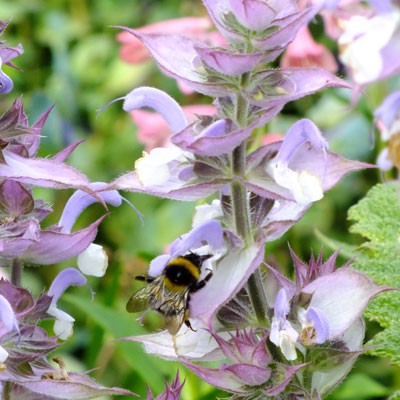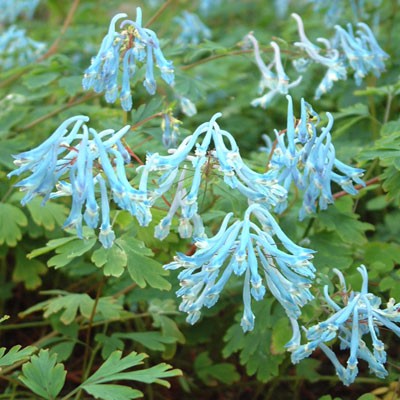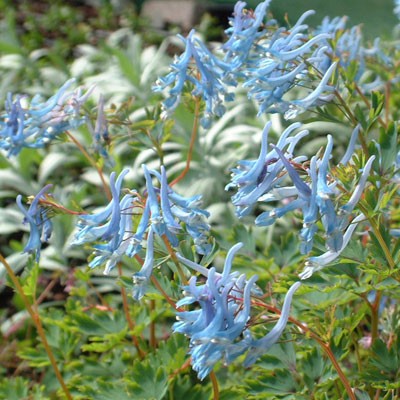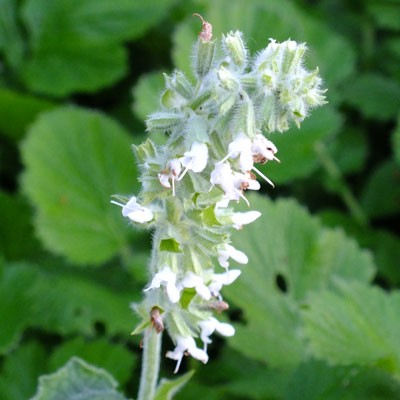Description
Salvia verticillata ‘Purple Rain’
A handsome species with long arching spikes of small purple flowers which emerge from conspicuous whorls of mauve bracts that outlast the flowers and produce a pretty purple haze. The bracts make the whole plant really ornamental long after flowering has finished. Careful deadheading will encourage the side branches to produce flowers also. The leaves are quite rounded and possess a slight woolly texture. Prefers a well drained site in full sun. 60-90cm
In these times of fashionable rages
Let us honor enduring sages.
Known to cure, to mend, to ease;
Companions to cooks; splendid teas.
Hundreds of species our world adorn,
Richly diverse in flower and form.
Hail to Salvia, that scented salvation,
Worthy of study and our admiration.
– by Andy Doty
The Genus Salvia is huge with at least 900 species covering a really wide range of habitats and growth types. They are one of the few plant groups, (including Mecanopsis and Delphinium), that covers all three primary colours, excelling at red and blue and dabbling somewhat in yellow. There are shrubby sages, perennials sages and a number of really spectacular biennials as well. We only scrape the surface of this rich variety, but we hope we offer a number of good reliable garden plants.
The question to ask is what will Salvia bring to the herbaceous garden. Probably their best asset is their long flowering and often repeat flowering habit. In some cases, such as Salvia ‘Purple Rain’ and Salvia sclarea ‘Turkestanica’ the actual flowering is a bonus as the bracts provide a large proportion of the colour and persist long after the flowers cease. When they are in flower they provide valuable nectar for bees and butterflies.
The majority of sages come from warm, Mediterranean style climates, enjoying a warm position in full sun with good drainage – It’s hard to generalise with such a huge family. As such many of the 900 species are better treated a s half hardy, but there are many good garden varieties, especially Salvia pratensis from meadow situations, including the British Isles, and Salvia nemerosa from the woodland edges. As a general rule, avoid excessive wet, especially during the winter and err towards more sun than shade. As for care, simply cut back when the flowering stems cease to look pretty and you will often be rewarded by a second flowering.
Salvia nemorosa has been grown in gardens for as long as gardens have been popular and has hybridised freely in its time. Hence some of the most popular Salvias are of uncertain parentage, being hybrids of Salvia nemorosa with possibly S.pratensis, S.virgata, S x syvestris and S. x superba. The one thing they have in common is being particularly good garden plants.
Salvia is the Latin name for the sages, a group of plants that belong to the mint family, Lamiaceae ( formerly Labiatae ). The family is characterised by having lipped flowers, square stems and a tendency towards fragrant leaves. The Lamiaceae contain quite a few of our most used herbs such as sage, thyme, mint and oregano. In fact without the Lamiaceae and Umbellifereae the herb garden would look quite bare.
Within the Lamiaceae, Salvias are most closely related to Nepeta, the catmints. In some cases, such as Nepeta govaniana, they can be easily confused. The flowers of Salvia are borne in distinct rings all around the flowering stems in whorled structures called a verticillasters. The flowers of Nepeta are borne on longer stalks.

























































Reviews
There are no reviews yet.